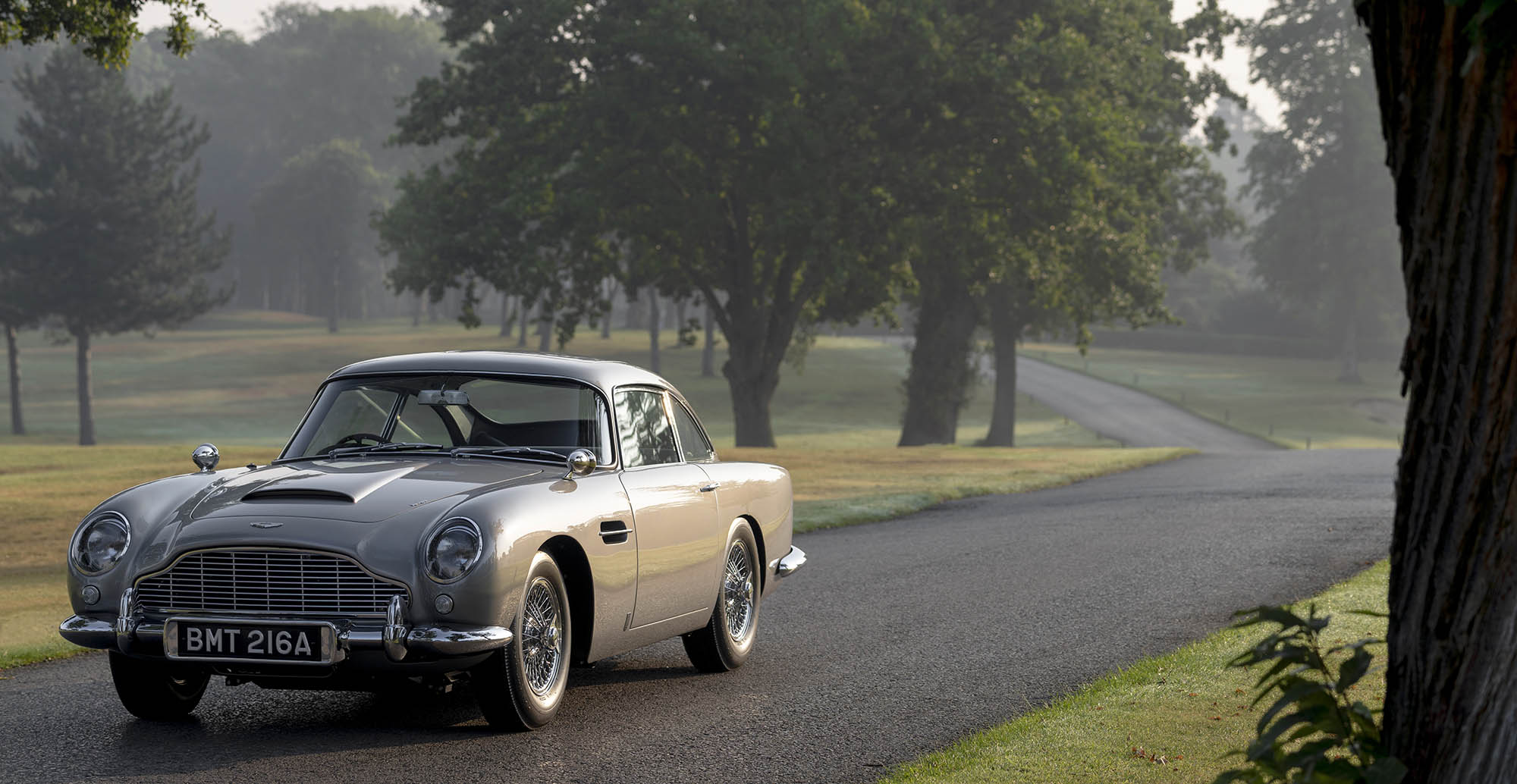
Behind the Wheel
Automotive leather
Words by Adam Hay-Nicholls
Photography © Aston Martin; Bentley; Polestar; and Bridge of Weir
Climb into an Aston Martin, Bentley, Ferrari or Rolls-Royce, and the first thing to hit you isn’t the smell of engine oil and cooked tyres – it’s the waft of top-quality leather. Leather and motor cars have gone hand-in-hand since Carl Benz invented the automobile some 138 years ago. It is versatile, comfortable, hard-wearing, luxurious and easy to look after.
Once the world’s first production car, Ford Model T, was introduced in 1908, automotive upholstering became big business. The Scottish family firm which outfitted the Model Ts built in the 1910s and 1920s in Manchester has grown to become the UK market leader in leather and one of the biggest hide suppliers to the global car industry. Established in 1905, Bridge of Weir today supplies hides to Jaguar, Land Rover, Aston Martin, Lotus, Rolls-Royce, Lincoln, and electric brands Polestar and Lucid. Its back catalogue includes the DeLorean DMC-12 that starred in Back to the Future and the 243mph McLaren F1.
Vying for the cinematic honours is Connolly, which supplied many prestige British car companies throughout the 20th century, as well as Ferrari and Maserati, and were responsible for the black leather interior of James Bond’s iconic Aston Martin DB5. The original firm went out of business in 2002 after 124 years of trading, but has been resurrected by fourth generation brothers Jonathan and Ben Connolly.
Aston Martin Works, which maintains vintage and modern Astons in Newport Pagnell for the marque’s most discerning patrons (among them, King Charles) is loyal to both leather brands, collaborating with Connolly on the classics and Bridge of Weir on the 21st century kit. Paul Spires, who is president of Aston Martin Works, says they’ve never seen so much as a blemish on either brand’s hides – which is always from a bull so as not to encounter stretch marks. “We use a very pure hide, and we can’t cover up any blemishes. We lay each hide out and inspect it to ensure it meets our quality standards. We don’t take it blind, but I’ve never known us to reject a hide yet. When we do our seat faces, we work down the backbone of the animal so we end up with a mirror. In our business, things not matching is a disaster.”
“We’re an uber-luxury brand, so we want the best of the best,” continues Spires, who has worked for Aston Martin for 40 years, “and I think British-sourced leather is the best in the world. We use the appropriate leather for the correct application, and we work closely with Connolly on the heritage side. Theirs is a more traditional leather, which was used in its day in the DB4s, 5s and 6s [in the 1960s].” In recent years, Aston Martin Works has produced a number of highly-limited and hugely expensive ‘continuation’ cars, built to the exact same measurements and of identical materials to the motor cars they manufactured before the Beatles broke up. Connolly was a key contributor. “For the Goldfinger car, in particular, they were incredibly helpful, as they’ve kept all the original swatches and were able to determine the exact colour. Connolly aren’t as big a company now as they were,” says Spires, “but we feel a sense of loyalty to each other.”
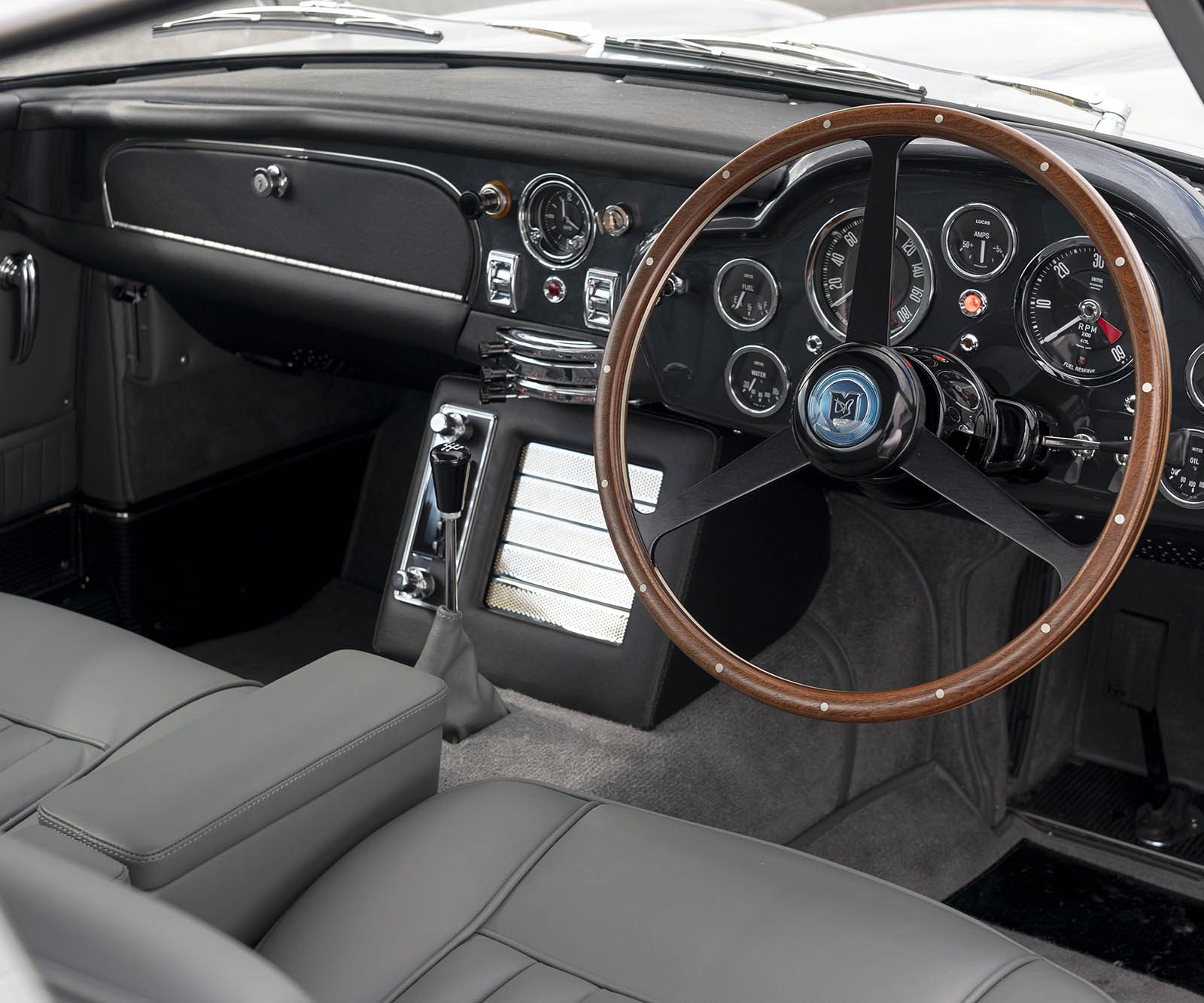
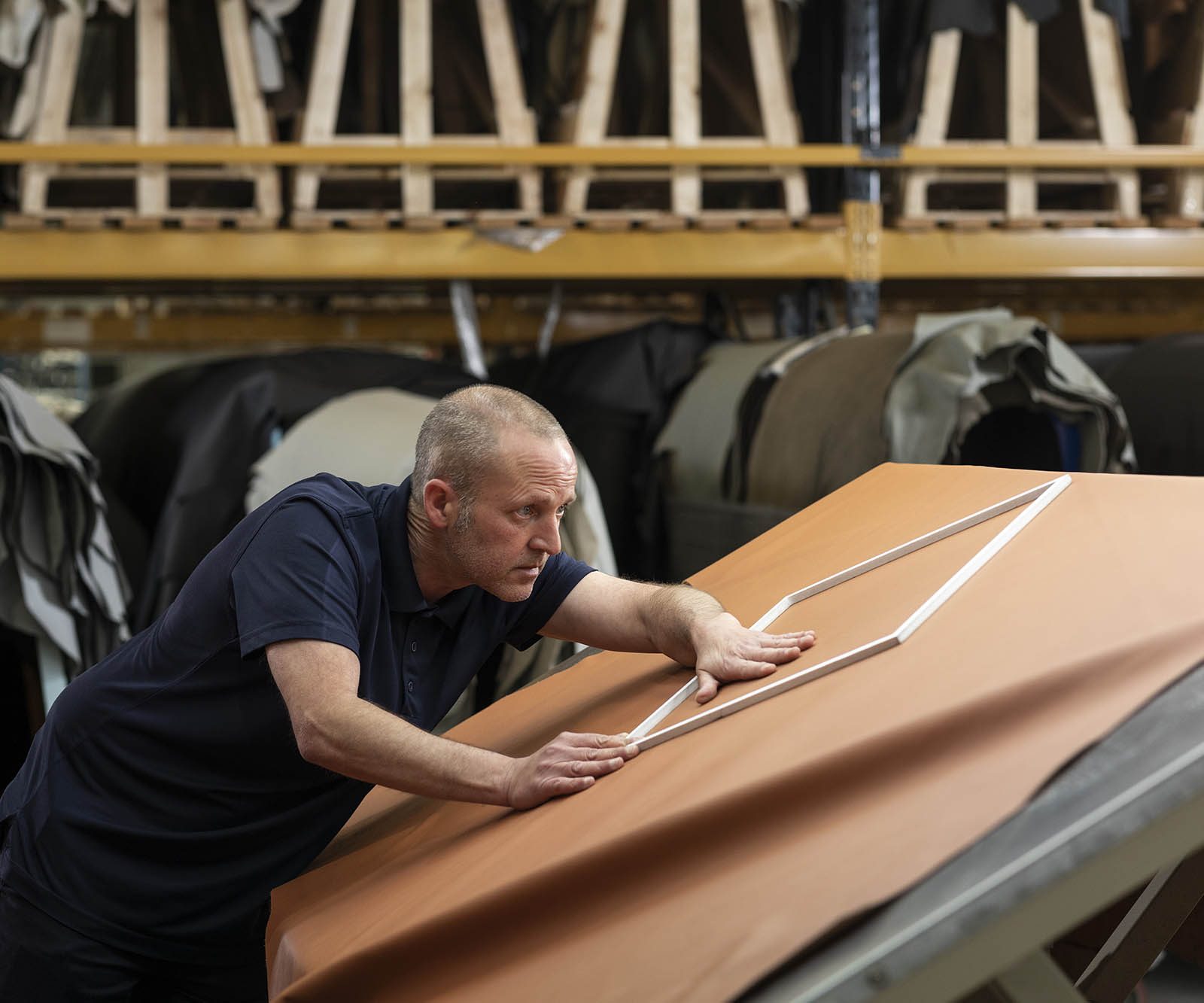
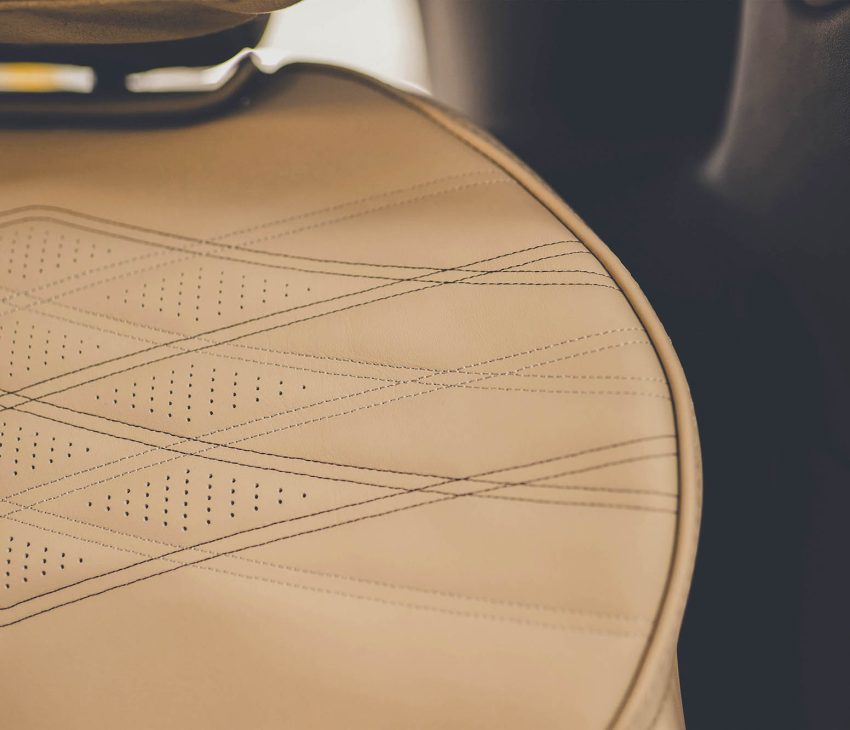
Bridge of Weir dominates the UK segment, employing 750 people and with sales in the region of £70 million per year – including 007’s contemporary transport. “That’s the scale of the automotive industry in the UK,” confirms Nicholas Muirhead, the CEO of Bridge of Weir (and its umbrella company, the Scottish Leather Group) and the great grandson of the company’s founder. “The UK is the leader in sustainable leather manufacturing. There are ten to 15 [major] companies that manufacturer automotive leather worldwide. Our competitors are in North America, Italy, Germany, Austria, South Korea and China.”
One of those is Pasubio, in Italy, who work with Lamborghini, Porsche and Bentley. The hides come from central Europe, predominantly southern Germany, Austria and Switzerland. In all cases, the supplier handles the manufacturing process from tanning to finishing, before shipping it to the OEM (Original Equipment Manufacturer), which takes care of the cutting and sewing. The focus is usually on seats, dashboards, door panels, roof linings and steering wheels. The bigger the car, usually the more hides it’ll require. An Aston DB5 Goldfinger takes seven, a Bentley Bentayga EWB (Extended Wheel Base) takes 13.
“We’ve had customers who’ve provided hides from their own ranch,” reveals Dr Marc Stang, who’s in charge of leather and colour development at Bentley. “We’ve also had customers who’ve wanted crocodile and things like that, but the vast majority stick with the standard leather. They may wish to bespoke the colour or the stitching, but that’s generally as far as it goes. When we do a very limited edition car, such as the Batur, we will put in as much new technology and material innovation as we can, including new strides in sustainability, to give our customers a taste of the future.”
Sustainability is now a constant discussion within car manufacturers and their suppliers, and all hides are a by-product of the meat industry. Bridge of Weir has become the benchmark, taking their raw material from slaughterhouses within 300 miles of their Renfrewshire location and ensuring traceability. They know exactly where the animals have come from, that they have been treated well and so has the land. Processing its waste on site and reducing its dependency on natural gas, the company has reduced the carbon intensity of its products by 90 per cent in the last 20 years. In a similar fashion, Pasubio is aiming to be carbon-neutral by 2030. In 2021, Bentley became the first ever automotive member of the Leather Working Group, a non-profit striving to create meaningful change across the global leather supply chain by bringing together companies like LVMH and Nike to improve sustainability and audit manufacturers against stringent independently-monitored standards.
This August, Bentley revealed a distinctive new olive tan leather, using an organic by-product of the olive oil industry. Derived from waste water extracted during the olive pressing procedure, the tanning agent remains free of harmful metals, minerals and aldehydes. The technique requires less water than a conventional tanning process and also offers a higher concentration of renewable chemicals. The resulting leather is incredibly soft and worthy of an automobile bearing the famous ‘Flying B.’
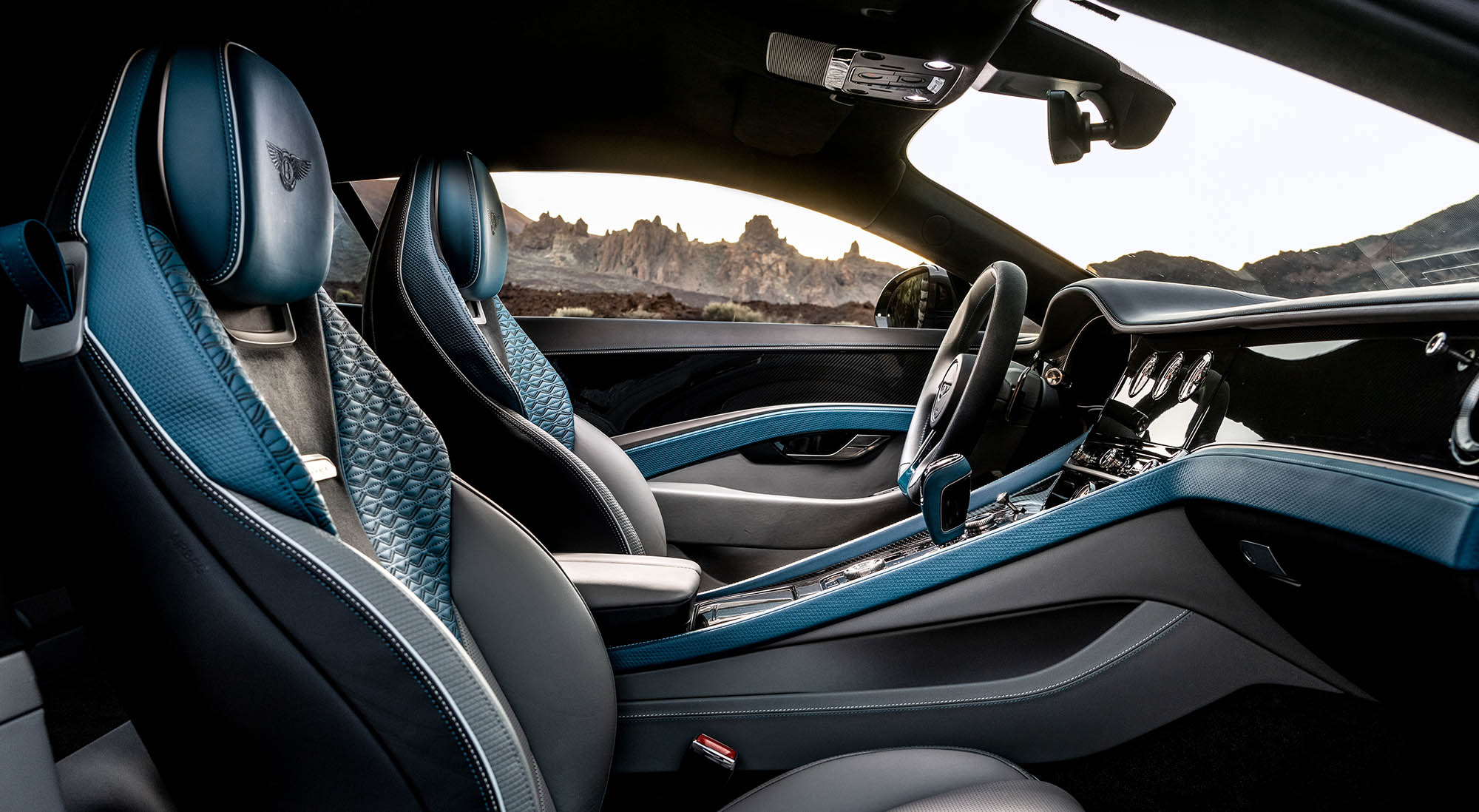
Bridge of Weir client Polestar, which is a brand with eco-consciousness firmly at its core, has rejected so-called vegan leathers for the real thing, although it has declared the search for a viable alternative is on. “At Polestar, we are closely following developments around new alternatives to leather,” says head of sustainability Fredrika Klaren. “Unfortunately, these materials do not work for car seats at the moment, as they do not meet our tough requirements for lifetime durability, wear and tear. The fashion industry has other opportunities to test these materials early on, as the quality and lifespan of their products is different from ours.” It is evident that the best quality leather alternatives aren’t yet as durable, versatile and green as the genuine article. “That’s the most sustainable option available right now,’ confirms Klaren.
Bentley sounds even more committed to long-term leather. “For the last several decades, leather has always been the luxury option for cars,” says Stang. “I know some of the OEMs have started to go towards leather-free interiors, but a lot of OEMs have also backpedalled recently because their customers have demanded leather. They don’t want a leather-free car. Our customers still want leather. Yes, times have changed and we may offer the choice of leather or leather-free interiors in the future, but if we were to do leather-free those materials would have to be considered luxurious. Ninety-five per cent of the cars we will build going forward will have leather interiors.”
That’ll come as reassurance to Nick Muirhead, but the Scottish Leather Group boss knows there are challenges ahead. “The biggest challenge is keeping leather relevant, keeping it seen as a material for the modern world. There’s a demand to make it more sustainable. Leather is the ultimate upcycle product. Meat consumption is rising and is predicted to keep doing so for the next 20 to 30 years as the global population increases. The utilisation of the hide is key, because if it isn’t turned into leather those hides are going into landfill. The challenge for us is to tell that story, that leather is one of the most sustainable materials you can source. There is a place in the world for vegan materials, but just because something is vegan doesn’t mean it’s sustainable. The most vegan materials are heavily petrochemical-based. Real leather is more eco-friendly, and the challenge we have is battling misinformation and ensuring customers still have a choice when it comes to specifying their cars.”
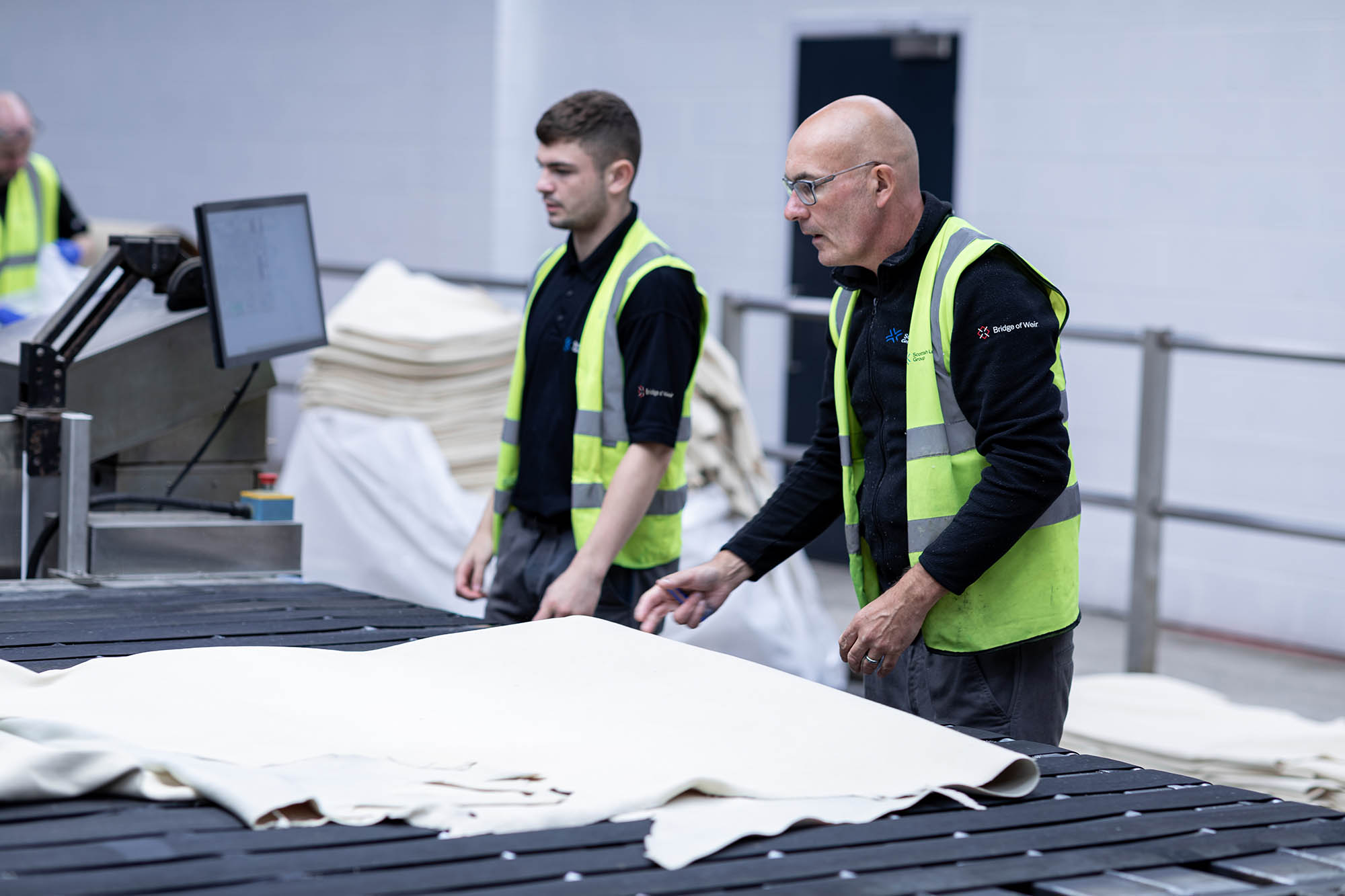
Paul Spires, meanwhile, is on a mission to make sure vital knowledge passes down through generations of technicians and trimmers at Aston Martin. “It’s really, really important to us that we transfer the skills to the next generation. Trim is something I’m very focused on at the moment because we don’t currently have an apprentice in the trim shop, and that’s something we want to resolve very quickly. Trimming, and also panel beating; we must keep those skills up in the UK. Delivering those very high-quality items is what we as a country excel at. It’s a concern that these skills could disappear. Once you’ve lost them, you can’t get them back.
“When I took over [in 2014], the trim shop was right at the back of the workshop, it was dark and the roof leaked. Trim is a core discipline of our business, so we moved it to what was the DB4 build centre and now the trimmers are visible and at the heart of the business. These artisan skills shouldn’t be hidden away. We should be proud of these skills. Whenever we bring people for a tour, this is the first room we show them.
“There are three key Ps to our operation: People, Process and Place, and we’re always investing in all three. But we can only do this when we are commercially successful. I don’t get a grant to run this as a living museum. If there wasn’t enough trim work, I might have to shut my trim shop down, and that would be a disaster. We can only keep it running as long as our customers keep coming to us to buy trim items.”
So, what are they currently working on in the trim shop? “We’re doing a dog cover for the rear seats in a DBX to protect the upholstery. The gentleman has a particularly hairy dog, so we’ve made it unique for him. It’s a real work of art. After the DBX, the dog’s his most important asset. He might be man’s best friend, but best he keeps his claws off the leather.”
To learn more about automotive leather visit One4Leather
READ MORE

Breaking Through the Class Ceiling
What can a photographic exhibition at Southampton University teach us about social mobility? Students, staff and alumni share their experiences and contribute to a complex, intersectional picture of challenges.

Boosting Opportunity at the Leathersellers' Federation of Schools
School led and backed by research a new social mobility project has created the dream job for Learning Mentor, Cherisa Kya-Scott.

Unrestricted grant funding at the Leathersellers' Federation of Schools
At the Leathersellers’ Federation of Schools in Lewisham, unrestricted grant funding is helping pupils learn, thrive, and achieve their potential.